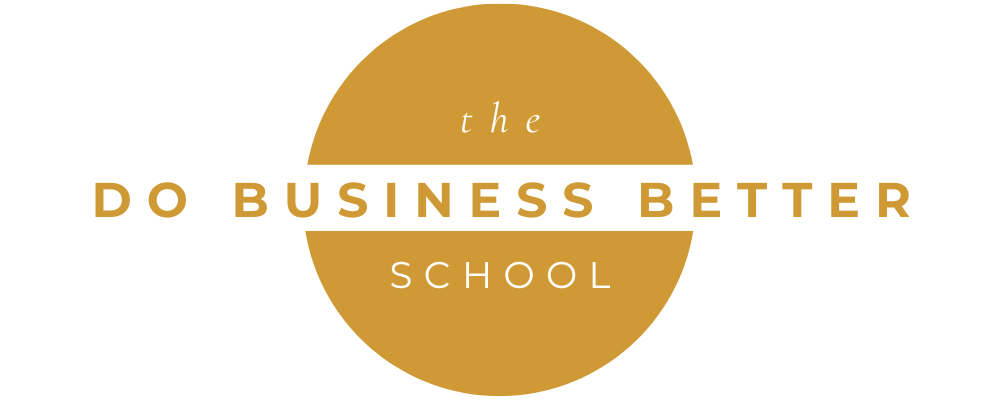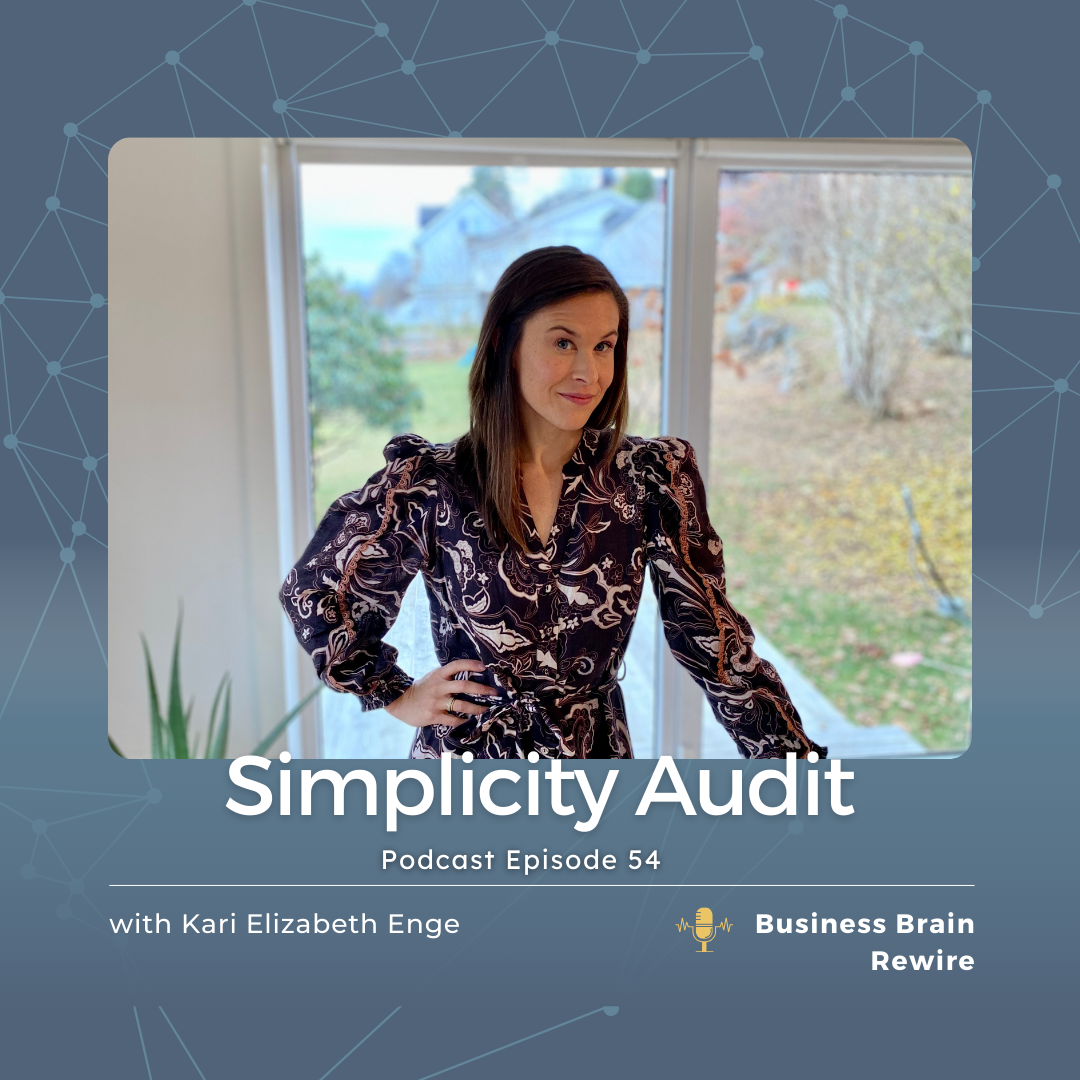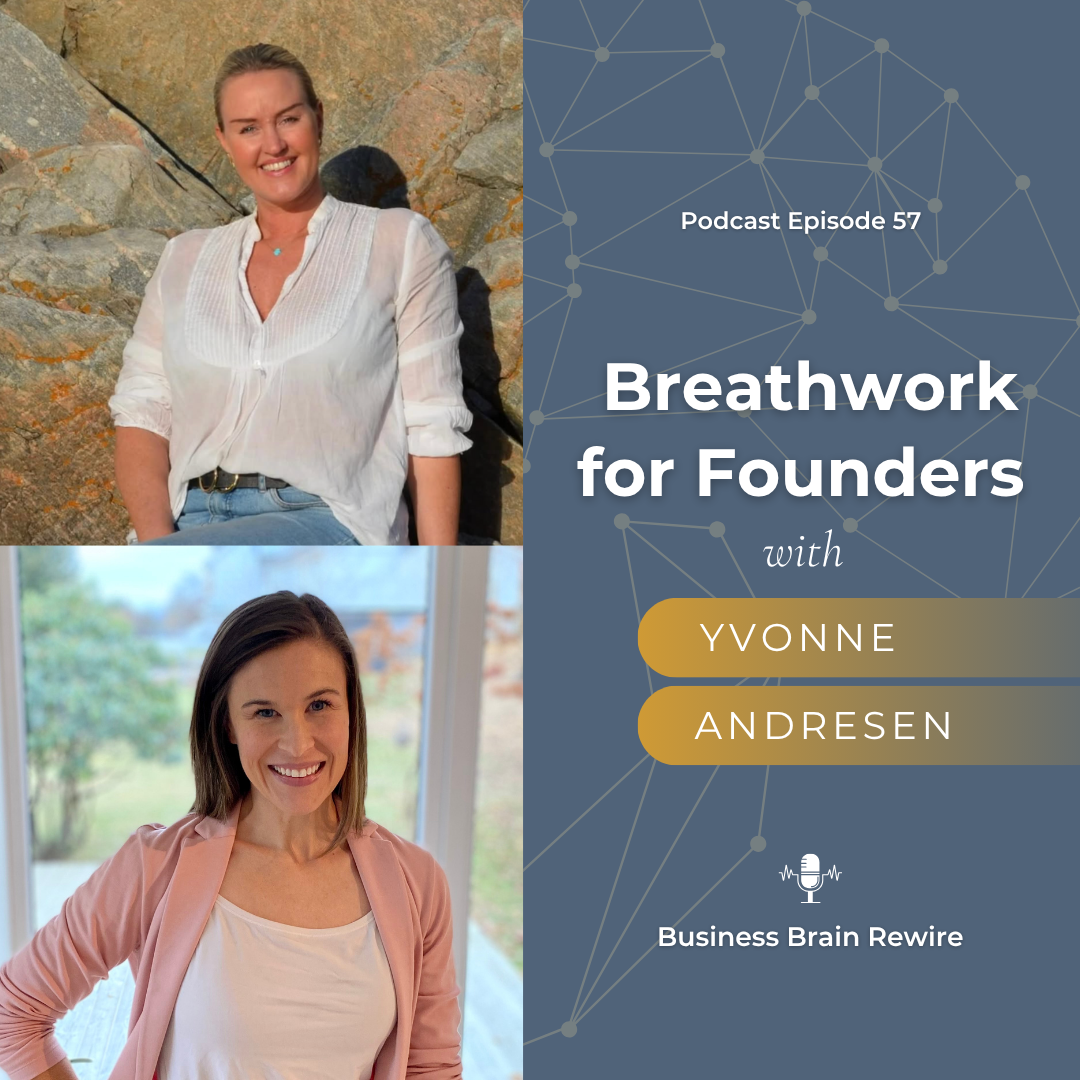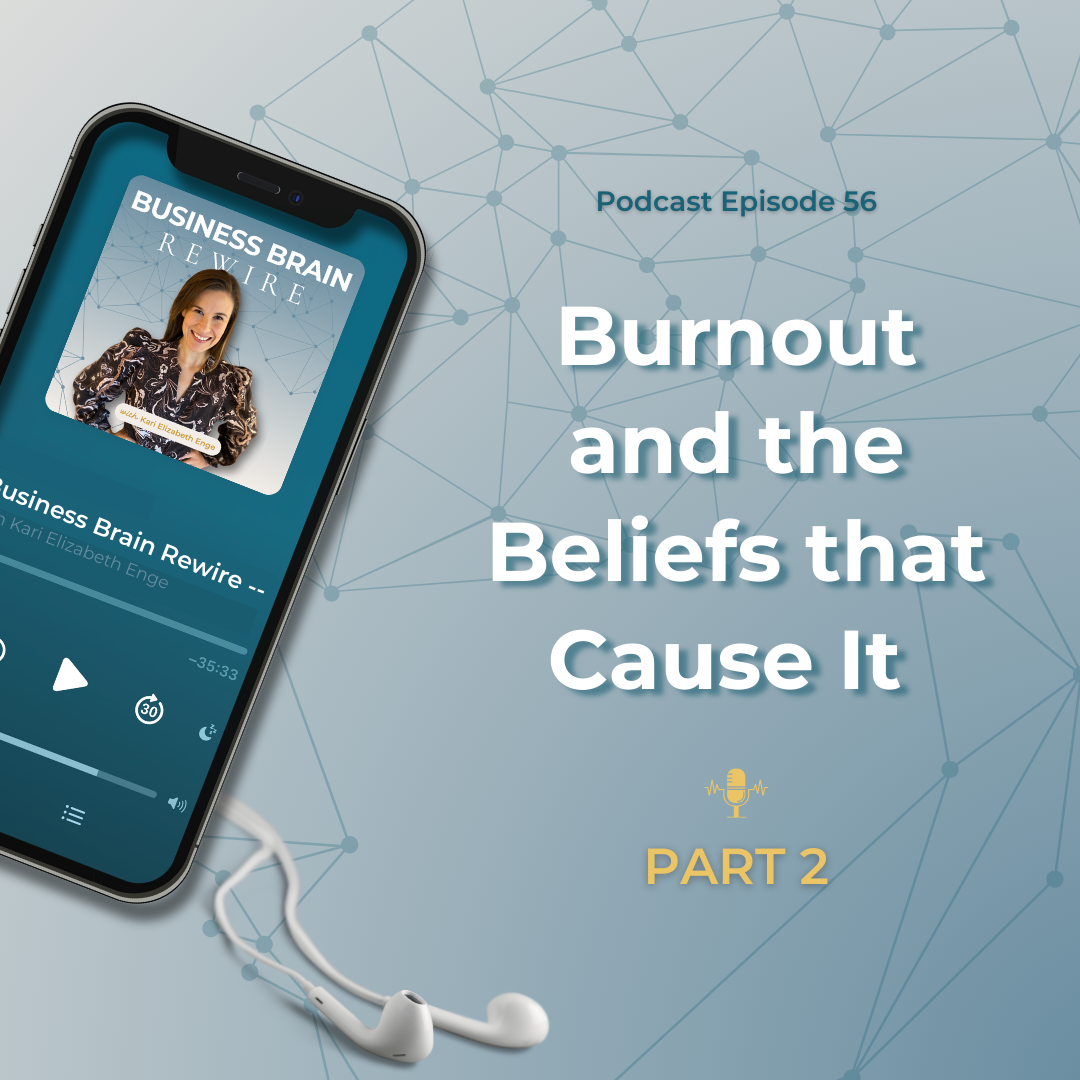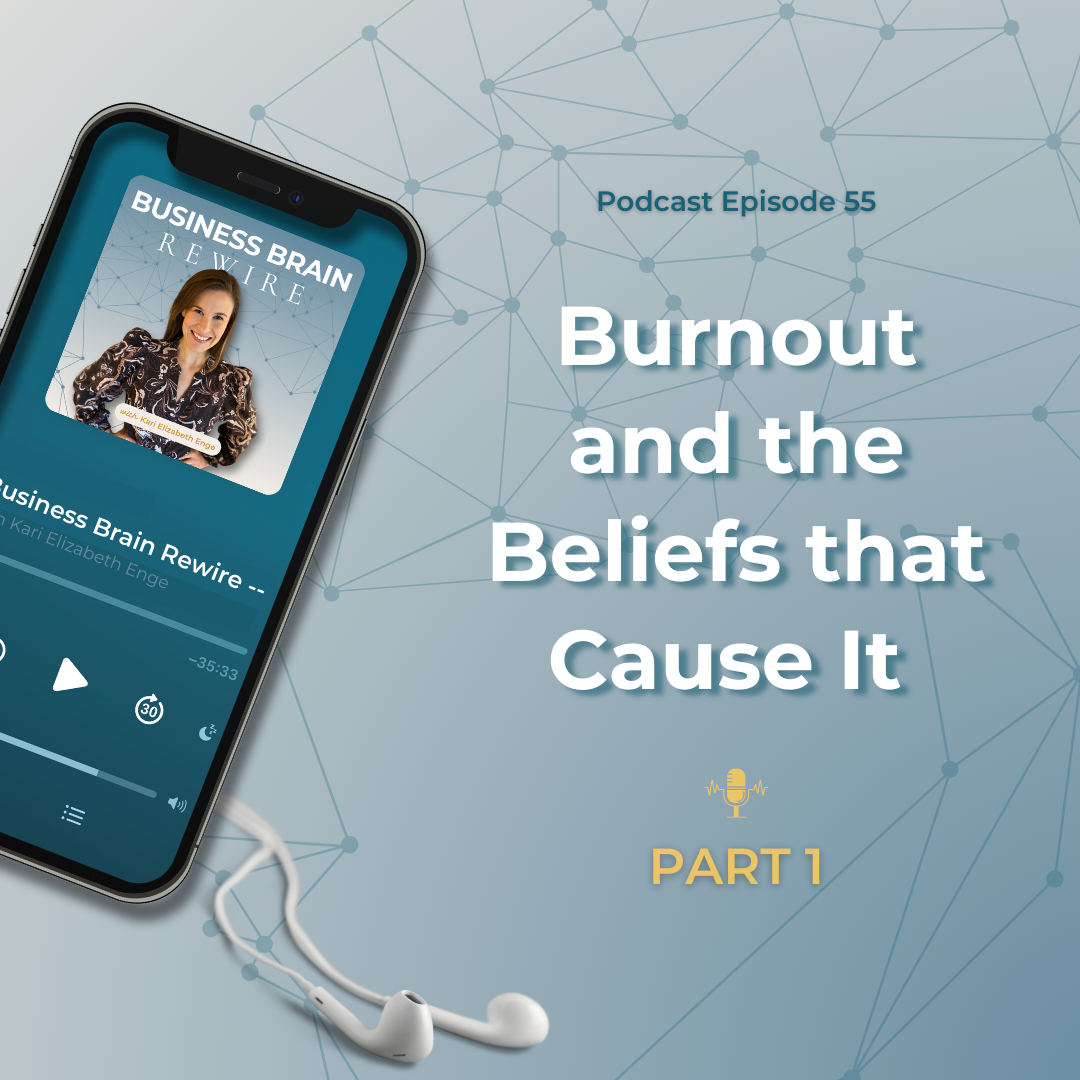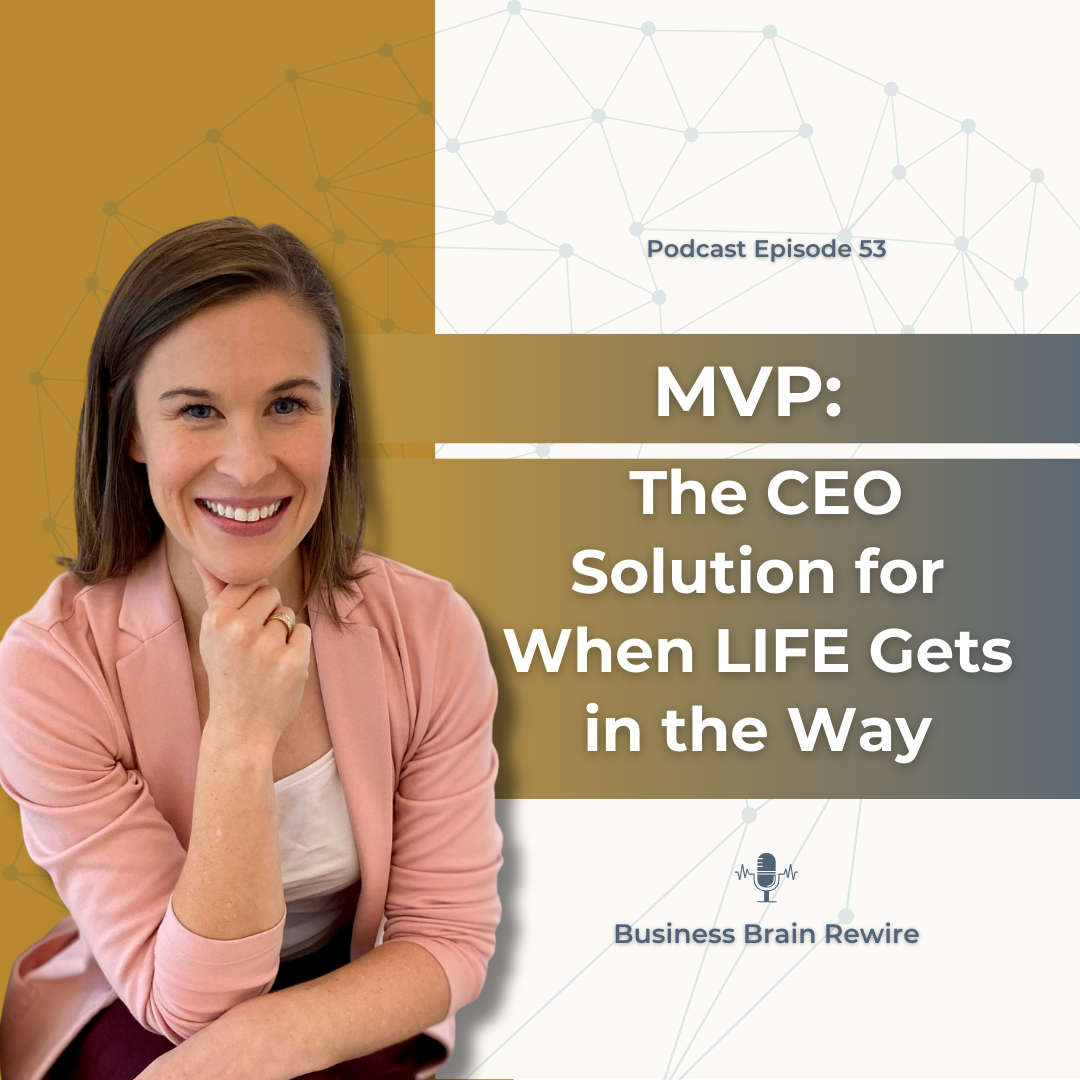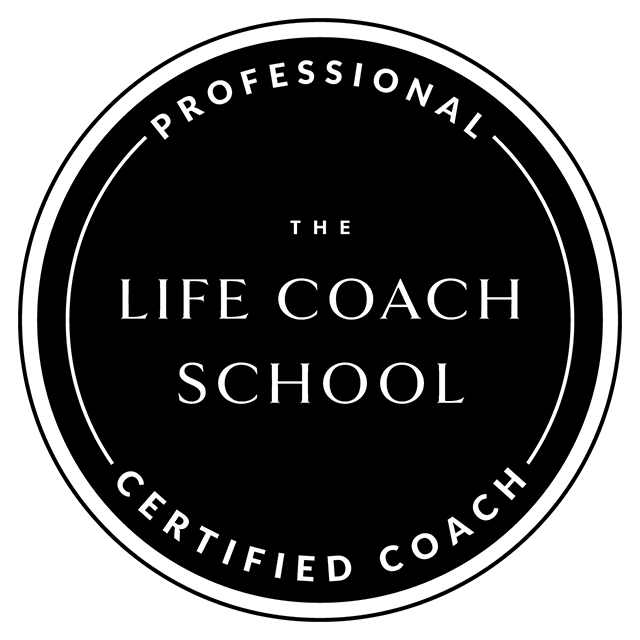When your business feels complicated, it’s often a sign of something deeper – overwhelm, procrastination, or even nervous system dysregulation. But the truth is: simplicity is what creates clarity, confidence, and sustainable success.
In this episode, I walk you through my Simplicity Audit —a practical process to strip away the clutter, trim unnecessary complexity, and get back to a business model and strategy that feels clear and doable.
You’ll learn:
- Why complexity often shows up when founders feel insecure or dysregulated
- How to recognize the difference between true creativity and fear-based “busy ideas”
- Six powerful questions to audit your business model and marketing strategy
- How simplicity regulates your nervous system and makes you more magnetic to clients
- Why a simple plan is easier to implement, evaluate, and sustain over time
If your business feels overwhelming or cluttered, this episode will help you reset, simplify, and return to clarity – so you can move forward with confidence and ease.
Important Links from Today’s Episode:
Related Episode: Ep 12. Slow Down to Speed Up: Debunking the ‘Speed to Market’ Myth for a More Strategic Approach
Transcript
[00:02:25] So today I want to teach you something that I do all the time, which is called a Simplicity audit. So I’m gonna talk a little bit about what simplicity is first, why it’s important, how you know when you have achieved simplicity, and then I’ll take you through the steps that I follow whenever I do a simplicity audit.
[00:02:46] Now, I had to think a little bit about this, because it’s just something that I do. So automatically that I don’t even really know I have a process for it. But, when I sat down to prepare for this episode, I just immediately knew the questions that come up for me when I do my CEO days and when I ask clients. It kind of formed this beautiful little process that I’m gonna share with you today. Now, I don’t have my normal microphone with me today. I am out on the go recording this, so please apologize, you know the different sounding audio. But I thought, you know what? Let’s just grab the laptop record with what I have so I can teach you guys simplicity today. Okay? So I’m keeping it simple, but I hope that you really find value in today’s episode.
[00:03:33] Let’s begin by first defining what simplicity is. Simplicity is the act of really being plain being, you know, not complex, not overly confusing in design, it means accomplishing something with as few steps as possible. It is easy to understand. It is easy to execute. It is the opposite of overwhelm. Overwhelm is sometimes a really good term to define as well. When we’re talking about simplicity, overwhelm is trying to solve too many things at the very same time. When you’ve got too much complexity, you’re gonna get that overwhelm. That is really the opposite of simplicity and what we’re trying to achieve here.
[00:04:27] Now, a lot of times when founders are designing products and services, they want to give their customers lots of features, lots of benefits, and they strive for the opposite of simplicity because they think: I need to provide a lot of value. But what I want you to think about from this perspective is that simplicity is actually more valuable than complexity. When we make things very fast and efficient and streamlined for our customers, that simplicity is extremely appreciated by our customers because we’re not wasting their time and we’re not wasting their mental bandwidth.
[00:05:11] So I want you to really try on this idea that the more simple you make things for your customers, the better. The more streamlined. The more easy to .Understand you’re gonna make more money. You’re gonna serve the world better. That doesn’t just apply to your products and services, but also within your own organization, within your own company.
[00:05:33] How can you keep things easy to understand with as few steps as possible so that it is just so simple and clear for your brain to start to execute. I actually think that too much complexity in a business model is a sign of nervous system dysregulation going on for the founder. A lot of times when I first start, you know, working with new founders especially, they will have extremely complex business plans and business models and marketing strategies. When we get down to it, it normally comes from thoughts like: i’m not enough. The market’s not gonna trust us. We need to prove ourselves. We need to differentiate ourselves. Things that show that maybe they’re a little bit insecure and they need to, again, overcompensate by just giving the customer everything. It can also come from a founder who’s been in business a while when he or she has thoughts like this isn’t working. Or what I’m doing is not enough, or the customer’s not gonna think this is enough. Right, if our brain’s like, okay, this marketing strategy’s not working, what do we need to do to fix it? Sometimes it will start throwing idea after idea and marketing channel after marketing channel out so that we think so much is required to get it working. Because again, what we’re currently doing is not enough, so maybe we should just add things. It’s kind of like a fight or flight response that happens. You wanna really be on the lookout for complexity in your own business model and complexity in your head.
[00:07:12] Your business should not feel confusing. Your business model should be right on the tip of your tongue. If someone asked you like, so what do you sell? How do you sell it? It should just be like, oh, this is what I sell. This is how I sell it. It’s so simple. If it’s not, then we really want to identify that as dysregulation and to solve for it. Now, if you’ve been listening to this podcast for a while, you know what dysregulation means. I’m talking about the nervous system. I’m talking about how our bodies and brains are wired to thrive with a sense of safety. When we don’t feel safe, we go into these protective or survival responses, like you know, all other animals. We go into fight, flight, or freeze. This can look like again bringing a lot of action into the business, over actioning, or it can look like procrastination because you’re so overwhelmed with all you have to do that you can’t decide or you can’t get started, or you can’t make a decision. This is one of the reasons why simplicity is so important, because it keeps you from falling into this dysregulated state because you’re gonna feel safer when you know, okay, this is what I’ve gotta do, and it feels really clear and doable for me.
[00:08:28] But also, if we do not recognize our dysregulation, sometimes we can just look at what we’ve got on our plate and be like, why are we doing so much? Why? Why is this so complex? Why are there so many moving pieces? Oh, maybe it’s because I am already dysregulated. Okay, so there are definitely some somatic and mindset things we can do to help our dysregulated or fight flight, freeze nervous systems, but also a simplicity audit will help us to do this as well. Cause remember: if everything feels simple and doable in our brain, that’s gonna calm down the survival response, make us feel safe so we can go ahead and start executing.
[00:09:13] Now before I get into the actual steps of a simplicity audit, what questions we need to ask, what things we need to get rid of to really trim the fat? I do wanna just say a quick little caveat here and it is about creative ideas. Because a lot of founders will say, I’m just full of creativity. My brain is just so active. I’m so passionate about my purpose driven business that I just have ideas all the time. I get it. I have this type of brain too. I can really get excited about my business. Sometimes the ideas are just flowing around and I’m in this flow state, this play state with it. That is good. But I think that most founders don’t know the difference between anxious analysis paralysis, anxious spinning of thoughts, cluttered fight flight business models, and the play state, which will activate a lot of creative ideas.
[00:10:18] I wanna talk about the difference briefly. So that you understand how it should feel in your business on a day-to-day basis and how ideas should feel when they come about, so you are still like in this sweet spot where you have a really simple business, but also keeping room for creative ideas. When you are in the play state and the creative ideas are coming, they should feel like, oh, oh, that would be so fun, that just feels so aligned. So full of enjoyment for you. It should not be coming from, how do we get this working? This is not working. I’m stressed out, I’m frustrated. I only have so much runway of cash flow. What should we do? It really won’t come from that fear based thought process. It will come when you’re out regulating your nervous system, when you’re in the shower, when you’re out on a walk, when you’re in a yoga class, when you’re out on a run, when you’re just feeling huh, everything’s good for my business. This is when they’re reticular activating system, and the default mode in your brain will be active and will give you these high level, high impact good ideas.
[00:11:36] Now when you get these really great ideas that are not coming from fear and scarcity and adrenaline and cortisol, when they’re coming from the play state, what will happen is that you will remember these ideas really easily because they will feel simple and clear to you. It’s not like you’re gonna have to map it all out and look at the complexity and how would this work? It’s not gonna feel like that. It’s gonna be like, oh, this is just such a good idea. It is so simple. I know exactly how to make it happen and it will work. So you’re gonna be able to recall it. It’s also gonna be pretty easy for you to put it on the shelf for later. And this is a key piece. Because if your brain knows that it’s gonna work and that you have time and it’s not going anywhere and there’s not a lot of fear present, it’s going to really be able to say, you know what, i’m gonna do that, but I think the best time for that is in three months, is next quarter, is after I handle these other things first.
[00:12:38] Okay, so that’s how you know if creativity is coming from the right mindset, the right head space. These are gonna be really, really good ideas to execute when they come from this place. Normally, fear-based ideas that are coming from: ah, this is not working, what should we do, are not very high quality ideas, and they tend to be more complex and confusing.
[00:13:02] Now, creative ideas for the business, I will say it’s a bit nuanced because you know I’m saying if you’re regulated, you’re gonna be able to put the creative idea on the shelf for later. But sometimes the founder can easily tell themselves, oh, I have this great idea and I’m gonna put it on the shelf for later. But really it’s procrastination coming from fear. Oh, it’s just not the right time for my business because the kids are not in school yet. Or I’ve got this other thing going on. Or this needs to come for later when I have x, y, z in place. Oftentimes this is just the founder procrastinating because it’s uncomfortable. They don’t know how to do this new thing. So they put a lot of barriers in the way and a lot of steps in the way for them to be able to do it. Again, this is really, really nuanced and I’m not gonna talk about procrastination specifically today. I’ll dive into that on another episode, and I believe I’ve shot another episode on this, if so, it’ll be linked up in the show notes.
[00:14:05] What I think is really interesting for you to think about is that a simplicity audit will by default help with your procrastination. Because when things are simple and when your brain knows exactly what you’re doing and it’s like clear, and you’ve got like a good firm decision about it, you’re not second guessing, you know the steps that are required, procrastination falls away. Because again, you’re feeling safe to step into it.
[00:14:36] I like to give the analogy of a pond to my clients. I say, have you ever been, you know, in a swimming hole or a lake or a pond? And it’s been a bit murky, you can’t see the bottom of it and the water is just not really clean. We have really clean, beautiful Nordic water here in Norway, so you know, most of the time if I’m swimming, I can see what’s on the bottom. But at home, where I’m from, in Tennessee, we have a lake and you cannot see the bottom. It’s like a greenish, brownish water because it’s just so warm the algae grows in it. And I will not go swimming just off a beach, you know, in that lake in Tennessee. I’ll wait a little bit where I can see my feet, but if it’s deeper, I’ve gotta have like my swim shoes on and I’m not really excited about it. In Norway, if I can see the bottom, I will feel more confident to go in.
[00:15:35] This is how it works with your nervous system. If your nervous system doesn’t know what it’s doing, how it’s gonna do it, or what possible outcomes might be, it will not step into it. We can’t have your business model feeling all complex and all murky. You’re not gonna go into it. You’re gonna procrastinate. Or you’re gonna be thinking, this might not work. Let’s just keep adding things as a form of procrastination. Let’s just keep thinking things through. Okay? This is why a simplicity audit is so important.
[00:16:07] Now that I’ve recapped what simplicity is, how to differ, differentiate it from creative ideas and how that blends in with procrastination, let’s talk about exactly what a simplicity audit is, how to complete it, and how often I recommend it.
[00:16:25] A simplicity audit is just a couple of questions and I like to do this on a regular basis when I do my CEO day. I will do a deep dive, look at my business twice a year, once in the summer, once in December, and really look at, okay, what’s working, what’s not, what needs to shift? This is when I ask my simplicity audit questions. Then, you know, on a monthly basis, I check in with, am I still decided? Am I confident in my plan? If I’m procrastinating, why? I do these smaller check-ins with myself. But for today, I just want you to think about this simplicity audit as being something you can complete now, right after this episode or within the week of this episode. When the idea of simplicity is still top of mind, and then hopefully it can become a part of your regular check-ins with your business when you’re strategizing once or twice a year.
[00:17:25] Okay, so a simplicity audit for me is about six questions. Okay? The first question I ask myself is a really obvious one, but it’s for the sake of myself being able to reflect back on and to see how quickly I can recall and explain myself. Okay? What is my business model? And I explain it to myself in two sentences. I try to get it really crisp and clean coming out of my own mouth. I wanna be able to explain my business model to myself. When I do this, it should be easy to explain. It should feel simple and clear to me. It should feel doable to me. It shouldn’t have all of these moving parts and complexities. That’s the first thing. The first part of the exercise that I want you to go through is, what is my business model? Explain it back to yourself and then just check in with your emotions. Does this feel simple? Does this feel doable? Does this feel clear?
[00:18:33] The second one is, what is my marketing strategy? And I want you to do the same thing. Try to explain your marketing strategy back to yourself. What are the channels? What do I do there? What’s the customer journey? What are the steps? What is the call to action or how I want the customer to go through? It should feel simple and clear to you as well.
[00:18:53] The third question is, all right, now that I know what my business model and my marketing strategy are, am I really confident in my business model? Am I really confident in the market strategy? Am I decided on it? What we wanna look for is if we are second guessing ourselves, if we’re a bit unsure, if we’re still like thinking about changing it or exploring another idea, or we’re not quite sure about this channel or that channel, or this funnel or that funnel, or this branding and messaging or that one, this logo in name. We don’t really want a lot of undecided things lying around and we don’t want a lot of lack of confidence or insecurity in something. If you find something like that, when you ask yourself this question, jot it down. Because the next step will really be deciding on these things and getting confident and clear in them. Okay, so that’s the third question.
[00:19:53] At this point, you might have a bit of work that you already know you should be doing some decisions to make, some things to clear up with the marketing strategy, the business model. But I think I really want you to just go through all the other questions as well before you dive into actually changing things or deciding on things.
[00:20:14] So the next question I want you to ask is, am I consistently taking action on this plan? Is there procrastination here? Part of this consistent action is, okay, after I take action on this for a week or two or a month, am I evaluating. Is part of my action taking regular evaluation of the actual data, meaning I tried this, this is what happened. I know exactly what happened from the data, and I’m able to take more action by tweaking just like a little tiny thing each time. Okay. That’s kind of part of simple implementation is I rinse and repeat the same strategy and the same business model over and over again. I do an evaluation, I change one tiny thing to see if it helps, right? I do that process over and over and over again. This is how a simple business model is executed without a lot of reinventing the wheel all the time. This will keep fight or flight really low when you follow this kind of lean startup methodology, rinse and repeat cycle.
[00:21:23] The fifth question is just a check-in on life phase, where I ask myself, is this time for any major overhauls anywhere? Have I had any lifestyle changes? Have my priorities shifted? What’s going on in my personal life? What’s going on with my relationships? What’s going on with my health? Do I really need to look at pivoting or adjusting something in a bigger way? You’ll always have like small little tweaks you’ll be making to your marketing strategies and things when you evaluate, but sometimes you know you need to make a major overhaul. I’ve done that this year where I’ve said, okay, my business schedule has to change because of my children’s needs. They’re gonna be home more. It’s time for an overhaul of the marketing strategy. It’s time to really trim the fat so that this business can still stay aligned with all my priorities. So sometimes part of this audit is saying, okay, I’ve gotta really make some major changes here while keeping simplicity front and center. So when you ask that question, you just wanna be like yes or no, in terms of is it time for a major overhaul? Then you just need to jot down okay, what are the things that have changed that will require me to now adjust the business to fit it?
[00:22:50] We’re not doing anything yet. We’re not making any new decisions. We’re just doing this audit. The last question I want you to ask yourself is, what are three things I could simplify? If I had to, you look at the business model, you look at the marketing strategy, and you just identify three possible things. Some examples of this could be just pulling up your p and l, pulling up your costs, and looking at how could I reduce some unnecessary spending. Have I let you know some spending creep in that’s kind of bloating the budget and have things kinda gotten too, too fancy? Are there unnecessary things that I could do here to help improve profit? Could I streamline a workflow? Am I doing something in a way that could be simplified so I could save time and steps and complexity? Or could I remove something? Could I remove a marketing channel? Could I remove a product? Could I look at what’s not performing well and what is performing well? Could I potentially double down on what is working?
[00:23:59] These are all really good questions when you’re thinking about what are the three possible things I could simplify? After you ask these six questions, you’re gonna understand if you have a bloated, complex, confusing business model and marketing strategy. You’re gonna know if you’ve got a lack of confidence or some unmade decisions. You’re gonna know if you have procrastination in there, or if you’ve been reinventing the wheel too much. You’re also gonna know is it time for a major overhaul and some ideas for what you could simplify, and from here, you just get started. Oftentimes, if you can’t make a decision and you need a major overhaul, it’s time for business coaching. This is when you can sit down with someone else and say, okay, let’s realign the business so that it works for me and my priorities.
[00:24:51] One of the things that I ask my clients all the time is, well, in an ideal scenario, what would your marketing strategy look like? What would your business model look like? Let’s just allow yourself to dream a little bit. Let’s allow yourself to bring up what your true desires are for this business. This is part of that process as well, right? Like in an ideal scenario, like what would I have as a business? Oftentimes we really can create a business model. That allows that while keeping a simple lean strategy in place that protects your personal priorities and wellbeing, you just might need help exploring all the different options on the table. Often we think, oh, I just have to be on social media, or I have to do ads, or I have to have a newsletter, or I have to do direct outreach. None of these things are actually required. You can really build a business model that works for you if you’re willing to look at, well, what do I truly desire? What’s important to me, instead of following what everyone else is doing, just because you think that that’s required to look legitimate, professional, or to get enough customers and clients.
[00:26:02] All right. I hope that this episode has really given you some things to chew on. If nothing else, I hope that it has allowed you to see how important simplicity is when you have a business model that is simple and a marketing strategy is simple, you’re more able to be decided and confident. It regulates the nervous system. And when you have a regulated nervous system, you are so much more magnetic to the world. You just call in customers, call in clients when you get on the phone, when you pitch yourself, when you send an email, the way that you say it and the body language and the words that you choose, they change when you’re regulated. Because of co-regulation and because of mirror neurons, you’re actually more successful. So simplicity is so important on so many levels, but it also just makes your business more fun, right? Cause you just get in, get out, you open up that reticular activating system for creative, fun ideas, and you stop all of this clutter that comes from fear.
[00:27:04] I hope that you are inspired by simplicity. You go for it on a regular basis in your business, and you use these questions. Of course, if you need help simplifying your business model, recreating a marketing strategy that works for you in your priorities, you know where to find me, you can go to do business better school.com. I normally have some openings for some free consultations so we can chat about it more. Alright, have a wonderful week and I will see you in the next episode.
Podcast: Play in new window | Download
